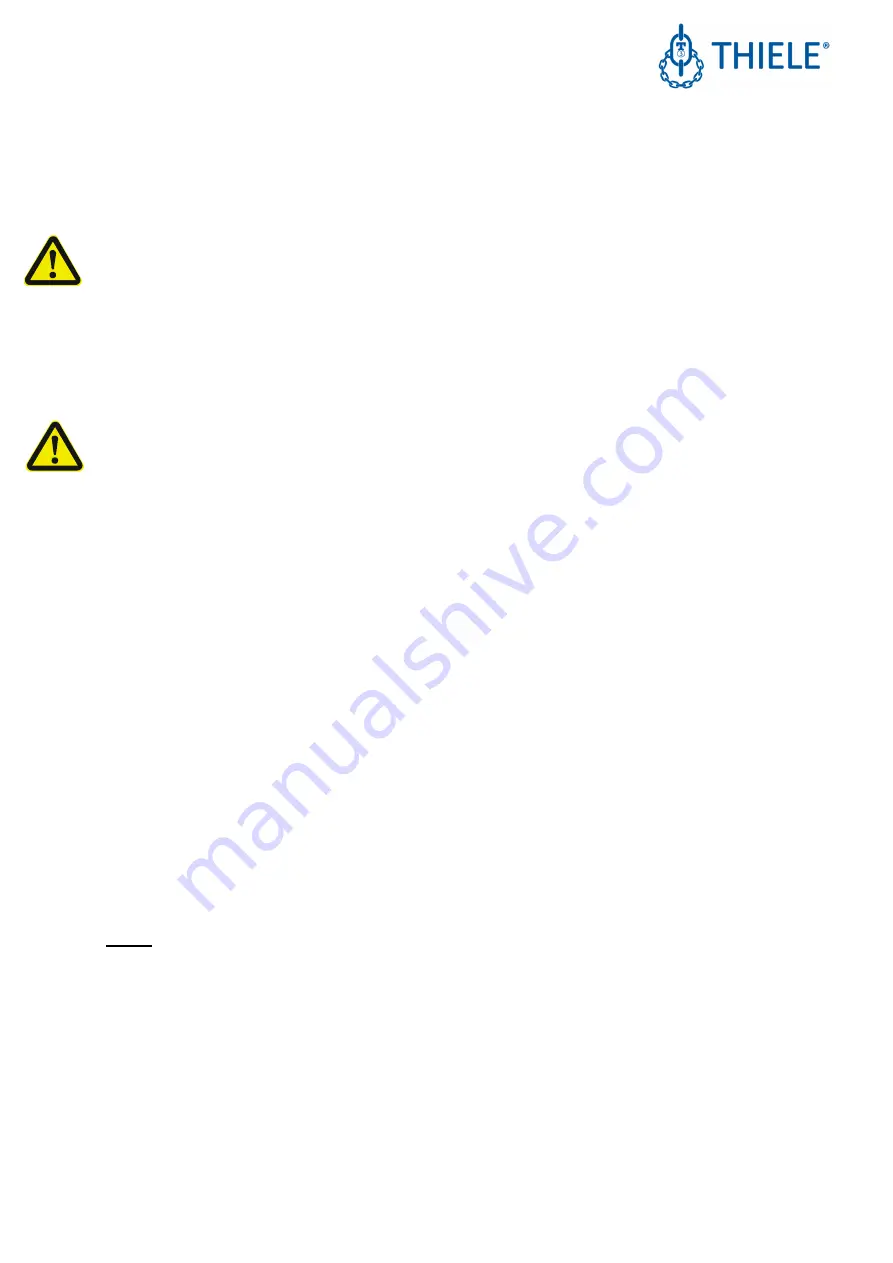
OPERATING INSTRUCTIONS
TM-CHAIN BLOCKS
B07725-G
EN 06.2022
6 | 12
5
CHAIN ASSEMBLY
1.
Clean the load chain that is to be assembled as well as the parts of the chain block that come
into contact with the load chain.
2.
Insert the first load chain link in an upright position (vertical to the sprocket)
between
the
chain
guide and the sprocket
.
Ensure that the welding seams of the following vertical load chain
links point outwards in a radial manner
. Rotate the hand wheel so that the second load chain
link can be horizontally assumed by the following pocket of the sprocket.
3.
Continue with the rotary movements until sufficient load chain links protrude from the other
side of the housing in order to perform the further steps.
4.
Pay attention to the correct positioning of both load chain strands in terms of the chain guide
rollers.
During operation, the housing orients itself according to the load. Neither of the load chain
strands may then come into contact with the housing bolts under load.
The load chain may not run above the guide roller under any circumstances!
5.
When dealing with a single-strand design, insert the load chain end of the load chain strand
(see note at the end of the page) into the console of the hook attachment and fasten it with the
chain bolt. Secure chain bolt with new self-locking nuts.
6.
When dealing with a twin-strand design, insert the load chain end of the load chain strand (see
note at the end of the page) above the bottom block sprocket. In doing so, pay attention to the
correct alignment of the inlet to the chain drive sprocket so that the chain strand is not twisted.
7.
When dealing with the TM-B-OP-100, insert the load chain end of the of the load chain strand
(see note at the end of the page) via the sprockets of the bottom and top block according to the
reeving diagram illustrated below. In doing so, pay attention to the correct alignment of the
inlets to the chain drive sprocket so that the load chain strands are not twisted.
8.
Fasten the loose load chain to the load chain end fitting fixed to the housing. In the event of a
twin-strand reeving the loose load chain end coming out of the bottom block will be fixed by a
bolt to the upper hook suspension. Pay attention that the load chain strands are not twisted. If
necessary, shorten the load chain by removing a link. Secure the chain bolt with a new splint.
9.
Perform a functional test using a low load. Check that the load chain strands are not twisted,
that the load chain is not touching the housing bolts and that it flawlessly glides into the chain
guide.
NOTE: When looking at the type plate, the downward load chain strand is always to the right of
the sprocket axle or rotation axis of the hand sprocket.
















